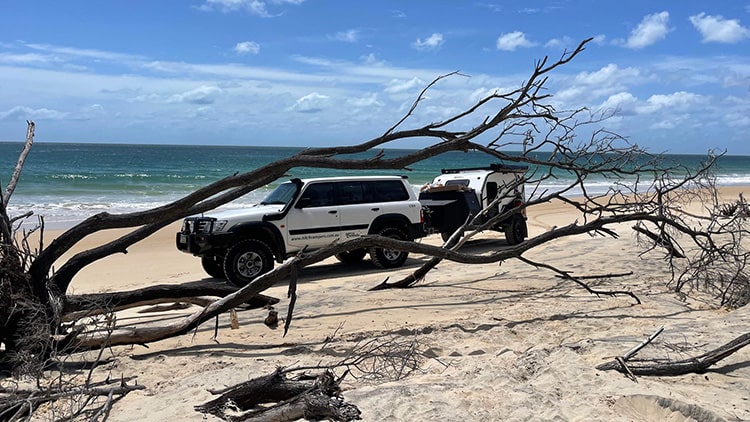
Below are some tips to ensure correct loading of your teardrop camper:
Loading Tips
- If it’s your first time packing, always check the tow vehicle, towbar, and teardrop camper specifications so as to avoid going over the acceptable weight limits.
- Establish a comfortable loading pattern and repeat.
- Heavy or bulky items are best placed near/over the axle.
- It’s recommended to use light items to minimize the load and also cut fuel costs.
- Avoid carrying large amounts of water unless there’s no stable water supply at your destination.
- Keep important tools and food at arm’s length when you head for a stop.
- Store equipment and tools in a storage box nearby for easy loading and unloading.
- Once the teardrop camper is fully loaded, have it weighed to make sure that everything is within the tow vehicle’s standard towing safety limits.
Know your camper’s specs
For compliance, ensure that you follow the three varied sets of specifications such as the following:
- Tow Vehicle Specs. Details stated in the car’s manual.
- Towbar Specs. Details set on the towbar’s ID plate.
If in case, there are differences in the above specifications, the lowest ratings will apply.

Don’t get greedy & overload
The Aggregate Trailer Mass (ATM) refers to the maximum weight which is visible on the ID plate. It is dubbed to be the safe working load. This pertains to the consolidated weight of a fully loaded trailer and the trailer itself without the tow vehicle. Once you exceed the ATM, you run the risk of damage and are tagged for illegal operation.
Payload
Payload simply refers to the allowable capacity to carry items or “carrying capacity” of a teardrop camper or caravan. It’s an advantage to know your available payload because it helps you to determine the amount you can carry. To calculate the payload: First, weigh the camper without the vehicle and then subtract it to its bare weight indicated on the ID plate.
Payload Pain
When determining the payload, don’t base your calculations on the tare weight as the values may change over time with certain add-ons or modifications made. Extra batteries or adding water tanks and like can impact the available payload.
Ball Load
The ball load pertains to the total amount of weight that a fully loaded teardrop camper presses into the towbar. You can check the recommended ball load as shown on the tow vehicle’s manual. Disregard the “ball load at tare” found on the camper’s ID plate because this refers to the ball load when it’s empty. If a legal ball load can’t be derived, the van and tow vehicle combination may be unfit.
On the Scales
Ball mass scales are available for a low price to allow measurement on-site. With very low ball load, the camper will be unfit to hit the road as it may eventually lead to mechanical failure. At this point, it’s best to shoot for a ball weight right in the middle of 50% and 100% referring to the maximum ball load specification. On the other hand, even if the ball load won’t hit 50% – the real test is its loading efficiency and performance.
